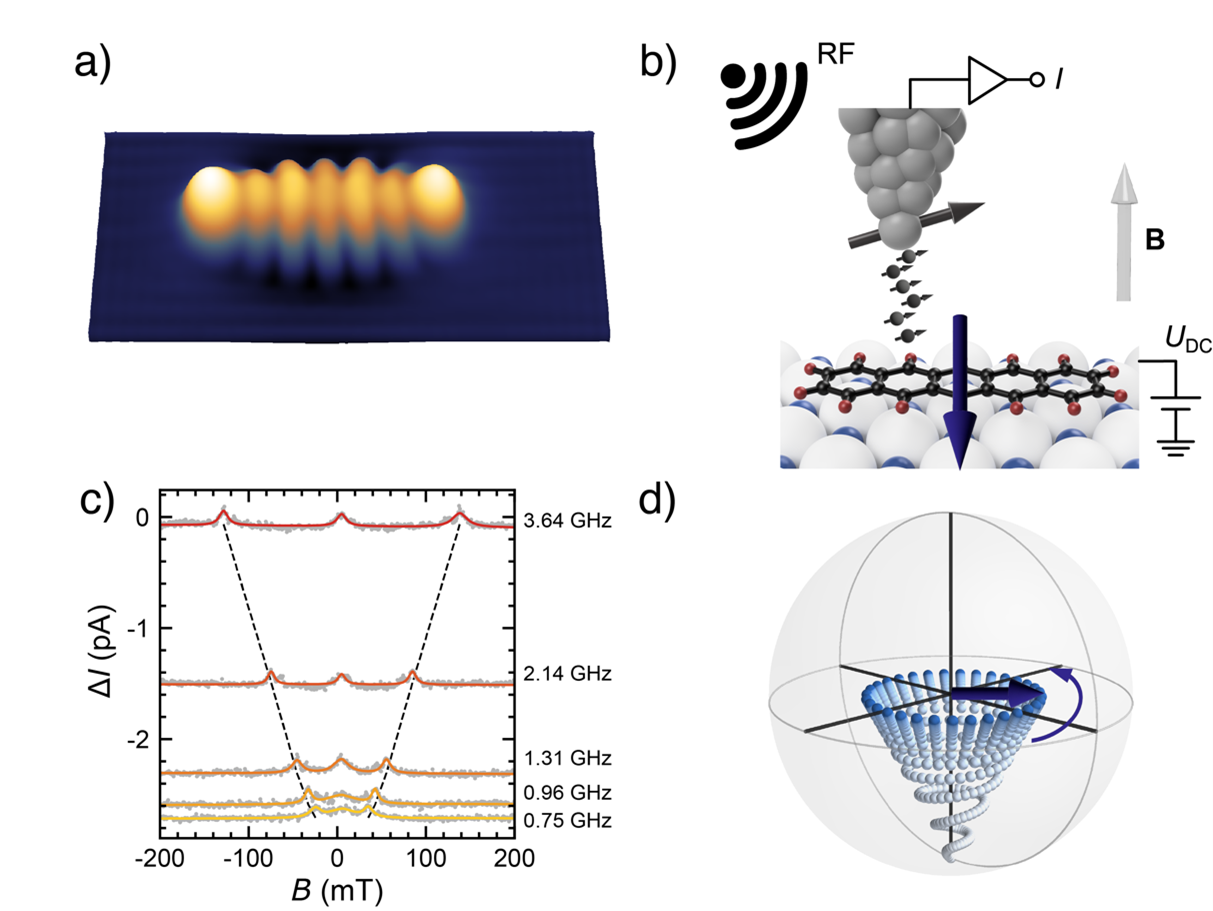Electron paramagnetic resonance driven by quantum spin torques
Quantum technologies rely on the control of spin states for the storage and processing of information. So far, the manipulation of quantum states has largely relied on the application of magnetic or electric fields using microwave and optical techniques. This approach is highly successful but challenging for scaling devices to nanometer dimensions due to the delocalized nature of the fields. On the other hand, spin currents associated to the flow of spin-angular momentum provide a most effective means to manipulate the magnetic state of mesoscopic devices in a local way. The spin torques associated to the absorption and scattering of spin currents have been shown to induce magnetization switching in magnetic tunnel junctions and high-frequency excitations in spin torque nano-oscillators. However, the preparation of quantum superposition states and the driving of spin precession by spin torque have not been demonstrated for quantum spins.

In this work, we present the first experimental demonstration of magnetic resonance of a single spin driven by a time-dependent spin-polarized current. In our experiments, we inject a radio-frequency spin-polarized current from the tip of an STM into the singly occupied orbital of the aromatic pentacene molecule (Fig. 1a) deposited on an ultra-thin magnesium oxide layer and observe the resonance of the magnetic moment in the external magnetic field (Fig. 1b). The well-defined electronic states of the molecule allow us to perform orbital-specific magnetic resonance (Fig. 1c) and unambiguously discriminate between the magnetic resonance of a single electron driven by oscillating fields and the spin-transfer torque induced by the tunneling current.
Previous experiments by STM described the injection of a spin-polarized current in single atoms and molecules in terms of incoherent flipping of the longitudinal spin moment. This is fundamentally different from the transfer of transverse spin angular momentum reported in our work (Fig. 1d), which is a key requirement to implement spin torques on the quantum level. Such quantum spin torques not only enable driving the precession of individual spins, but also their preparation into superposition states purely by spin-polarized currents.
Beyond demonstrating EPR by spin torques at the quantum level, we establish that the spin of organic radicals and its coherent evolution can be straightforwardly studied using an STM even at 4.5 K and potentially higher temperatures. Our work has thus also implications for the general field of EPR-STM, as it outlines new strategies for the initialization and probing of quantum spins with high spatial resolution. In particular, spin torque driving of EPR provides a novel and highly effective mechanism to excite magnetic resonance by STM, which circumvents the limitations due to temperature and electrical field response of the probed species.
Read more about it in the ETH news.
Selected Publications
Spin torque–driven electron paramagnetic resonance of a single spin in a pentacene molecule, S. Kovarik, R. Schlitz, A. Vishwakarma, D. Ruckert, P. Gambardella, S. Stepanow, Science, 384,1368–1373 (2024). external page article